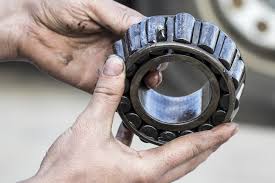Ball bearings are critical components in industrial machinery, playing a vital role in reducing friction and enabling smooth operation. However, when these bearings fail, the consequences can be severe, leading to costly downtime, repairs, and potential safety hazards. Recognizing the warning signs of impending ball bearing failure is crucial for maintaining the integrity and efficiency of industrial equipment. Here are five key indicators that your industrial equipment’s ball bearings may be at risk:
1. Unusual Noise
One of the earliest and most noticeable signs of ball bearing problems is abnormal noise. As bearings wear or become damaged, they often produce distinctive sounds that can alert operators to potential issues.
Types of Bearing Noises:
– Squealing or Whistling: This high-pitched noise often indicates inadequate lubrication or contamination.
– Grinding or Rumbling: A low-pitched, rough sound may suggest damage to the bearing’s rolling elements or races.
– Clicking or Knocking: Rhythmic clicking can be a sign of loose bearings or damaged components.
It’s important to note that these sounds may vary in intensity and frequency depending on the equipment’s speed and load. Regular auditory inspections can help identify these warning signs early, allowing for timely intervention.
2. Excessive Vibration
Increased vibration is another telltale sign of bearing problems. As bearings wear or become damaged, they can cause the machinery to vibrate more than usual. This excessive vibration can be felt by touch or measured using specialized vibration analysis equipment.
Causes of Bearing-Related Vibration:
– Misalignment of bearing components
– Uneven wear on rolling elements
– Looseness in the bearing housing
– Contamination causing irregular motion
Vibration analysis can provide valuable insights into the specific nature of the bearing problem, allowing maintenance teams to diagnose issues accurately and plan appropriate corrective actions.
3. Temperature Increases
Abnormal temperature rises in and around bearing housings are a significant indicator of potential failure. Bearings generate heat during normal operation, but excessive heat can signal serious problems.
Factors Contributing to Overheating:
– Insufficient or degraded lubrication
– Excessive load or speed
– Misalignment or preload issues
– Seal failure leading to contamination
Regular temperature monitoring, either through manual checks or continuous monitoring systems, can help detect these thermal anomalies before they lead to catastrophic failure.
4. Lubricant Contamination or Degradation
The condition of the lubricant used in ball bearings can provide valuable clues about their health. Contaminated or degraded lubricant not only indicates potential bearing issues but can also accelerate wear and damage.
Signs of Lubricant Problems:
– Discoloration or darkening of the lubricant
– Presence of metal particles or debris in the lubricant
– Changes in lubricant consistency or viscosity
– Unusual odors emanating from the bearing housing
Regular oil analysis can reveal these issues, providing insights into the bearing’s condition and the overall health of the machinery.
5. Visual Inspection Findings
While not always possible without disassembly, visual inspection can reveal critical signs of bearing wear or damage when accessible.
Visual Indicators of Bearing Problems:
– Visible wear tracks or indentations on bearing races
– Discoloration due to overheating
– Cracked or chipped bearing components
– Seal damage or excessive grease leakage
In some cases, borescopes or other inspection tools can be used to examine bearings in situ, allowing for visual checks without complete disassembly.
Proactive Maintenance Strategies
Recognizing these warning signs is only the first step in preventing ball bearing failures. Implementing a comprehensive maintenance strategy is crucial for extending bearing life and ensuring equipment reliability.
Key Elements of Effective Bearing Maintenance:
– Regular lubrication schedules tailored to operating conditions
– Vibration analysis and trend monitoring
– Thermal imaging to detect hot spots
– Proper alignment and installation procedures
– Contamination control measures
By adopting a proactive approach to bearing maintenance, industrial facilities can significantly reduce the risk of unexpected failures, minimize downtime, and optimize equipment performance.
Conclusion
Ball bearing failures can have serious consequences for industrial operations. By staying vigilant and attentive to these five warning signs – unusual noise, excessive vibration, temperature increases, lubricant issues, and visual indicators – maintenance teams can identify potential problems early. This early detection, combined with appropriate maintenance practices, can prevent catastrophic failures, extend equipment life, and ensure the smooth operation of industrial machinery. Remember, the key to preventing bearing failures lies in regular monitoring, timely intervention, and a commitment to proactive maintenance strategies. Connect with the most authentic bearing supplier near you and never regret a single bearing failure.













